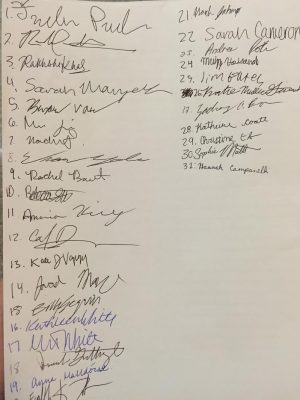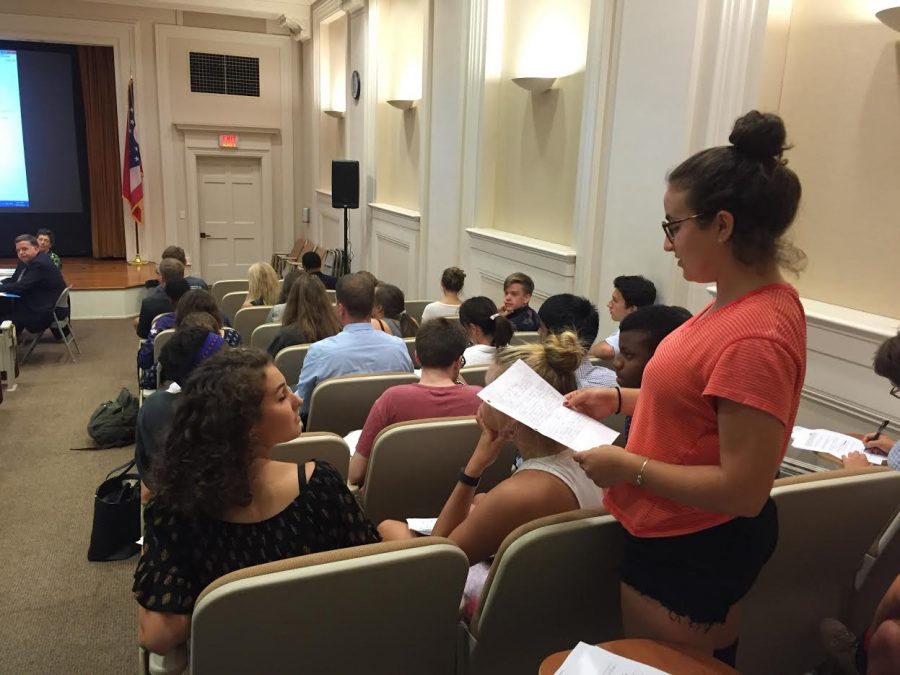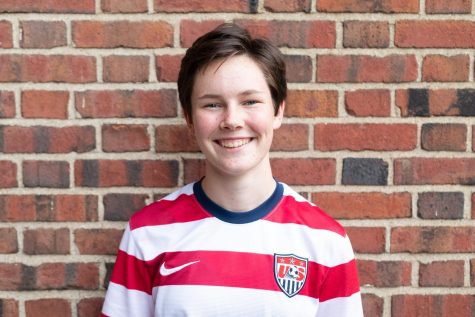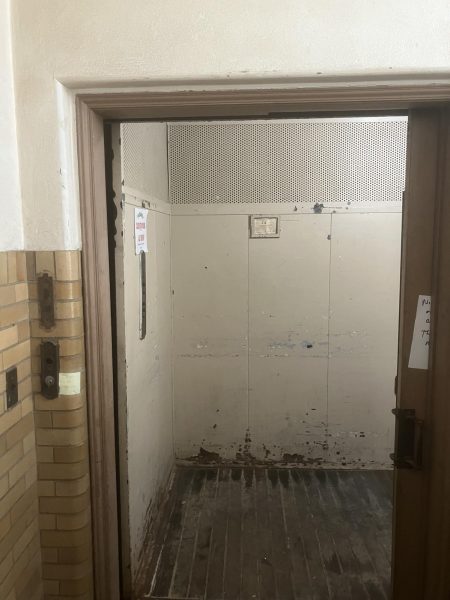To Fund or Not To Fund?
IB class Theory of Knowledge II is oversized, causing frustration of students, single teacher.
ToK I student Lily Roth speaks to the board of education, asking for a solution to an oversize ToK II.

The IB Theory of Knowledge curriculum emphasizes questions, including “How do we know?” and “How do we learn?”
This year, TOK II students are asking, “How do we learn in Theory of Knowledge II with 40 students in one class?”
Junior Lily Roth and senior Hannah Campanelli asked the board of education this question at its Sept. 13 meeting. Roth is currently in TOK I and she hopes to create a better learning environment for the class of 2017. Campanelli is in TOK II, currently experiencing a learning environment that she believes does not enable the seminar-based learning style that IB encourages.
The board approved Halle Bauer, a member of the individuals and societies and language and literature departments, and math teacher Christine McCandless to assist IB Coordinator and TOK II teacher Tim Mitchell in teaching the class. Mitchell, however, asked for a second TOK class in the spring of last school year.
Dr. Terri Breeden, director of curriculum, worked with Principal Jonathan Kuehnle, SHTA President John Morris and Mitchell to find a solution. “During August, once we realized how large that class was, we began to think of options and being on the board agenda was just a step that it went through,” she said.
However, students think that the school should have had more foresight. “Last year, our class of 40 students was split up into two class periods, which allowed us to interact with the other students and allowed us opportunities that we wouldn’t have had in a larger class,” Campanelli said at the meeting. “This year in TOK II, there are 40 of us total in the small auditorium with one teacher. With such a large class size the only reasonable way to learn is through a lecture format.”
However, the class is not meant to be a lecture. “It’s really a discussion class, it’s really about engaging with your peers, and not kind of sitting back and listening to an instructor,” said Tim Mitchell, TOK II teacher.
Campanelli presented the board with a petition signed by 31 TOK students, asking for a solution to the class size issue.
“In a class of about 24 students, our seminars are productive and informative, and it’s crucial that every student speak and share their unique perspective,” said Roth. “I love being involved in these seminars, however if I were put in a group of 43 students — the size of our TOK class for next year — our seminars would be dysfunctional.”
However, senior Joe Berusch, a TOK II student, chose not to sign the petition and instead sent parents and students an email explaining why.
“If there is anywhere in the district money needs to go, IB is not the place,” Berusch said in a phone interview. In his email, he stated that money should go to “students that have less time for homework and extracurricular activities because they have to work in the afternoons. Students whose parents did not attend college and need help in the college application process.”
However, Berusch acknowledged that the class could benefit from a smaller size. “Learning how to connect with different ideas is aided by being able to work with one another in groups — by yourself and with the teacher,” he said.
“We’re making sure additional teachers are going to the professional IB learning training, so they’re learning about how to teach TOK,” said Breeden. “We also made sure that the two teachers that will be helping Mr. Mitchell will know how the class is taught, understand the curriculum deeply. So we think next year there will be two sections.”







